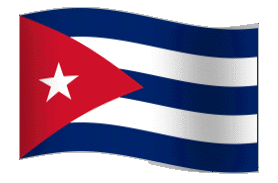After World War II, Cuba, like many other nations, was trying to get rid of its colonial past. Although it had technically become independent in 1898, as a result of the Spanish American War, Cuba was still struggling with the legacy of colonization. Spain began settling this Caribbean island in the late 15th century and continued to control it for the next 400 years. The Spanish set up an unequal political and economic system with Spanish peninsulares and creoles at the top and natives and African slaves at the bottom. This society was challenged several times in the 19th century, and finally with the help of the United States, Cuba won its independence. Although independent in name, Cuba has remained under the control of foreign nations and corrupt dictators. The Platt Amendment, a forced stipulation of Cuban independence, granted the United States control over Cuba's foreign relations and land for military bases. Despite having fought for a more just, free society, Cuba did not gain what it had hoped for. Dictators, like Machado and Batista, only brought corruption and chaos to Cuba. Che Guevara and Fidel Castro sought to bring an end to the inequalities that had existed in Cuba since the reign of the Spanish.



No comments:
Post a Comment